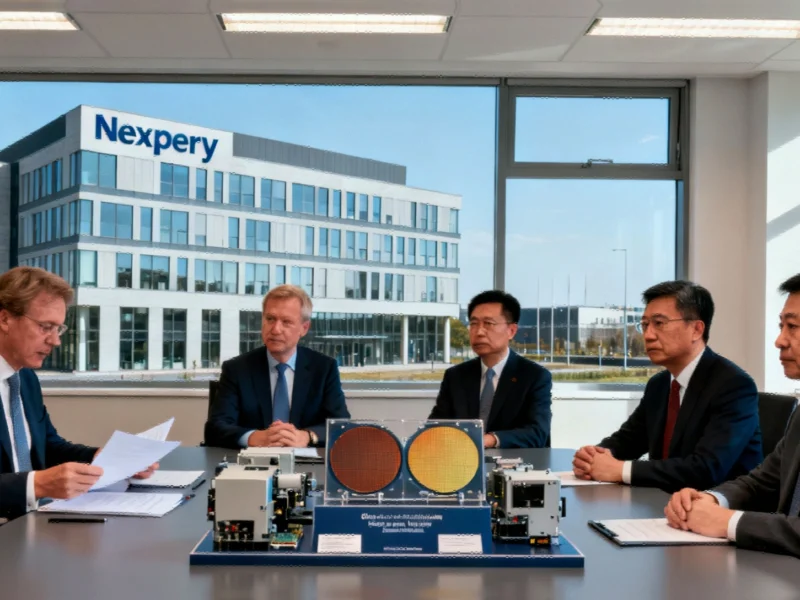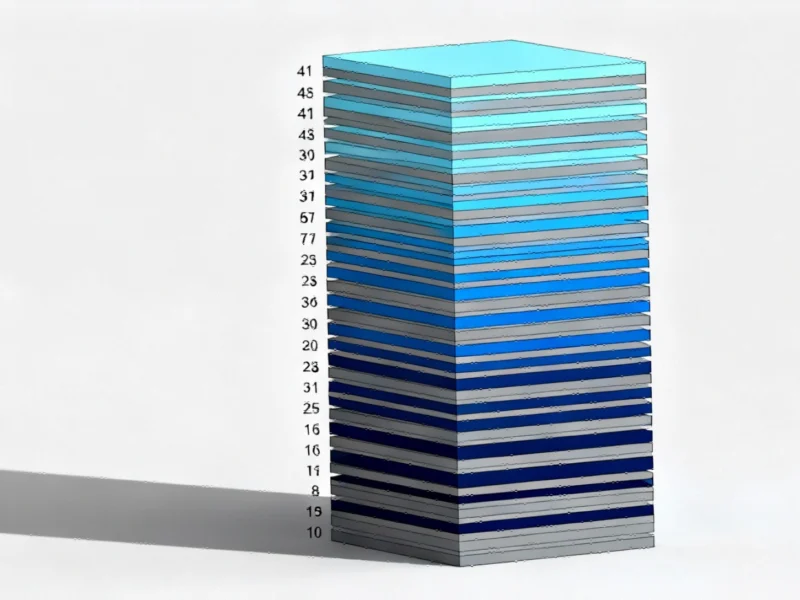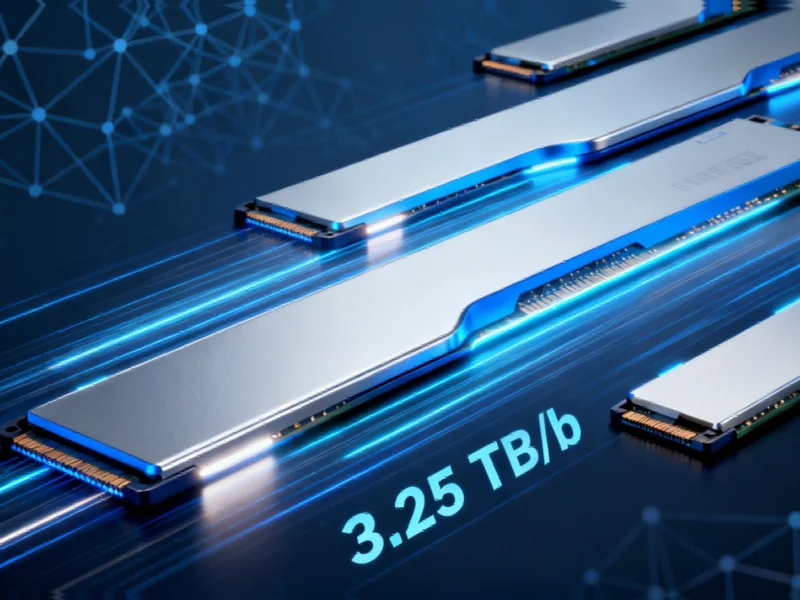Europe’s Boldest Semiconductor Protection Measure
In an unprecedented move that marks Europe’s most aggressive action to protect its strategic semiconductor industry, the Dutch government has seized control of Nexperia from its Chinese owner using a 73-year-old emergency law. The Netherlands Ministry of Economic Affairs quietly assumed control of the Nijmegen-headquartered semiconductor firm on September 30th, just one day before US export controls expanded to cover companies with majority owners on sanctions lists. This dramatic intervention represents a significant escalation in Europe’s efforts to safeguard critical technology infrastructure from foreign control.
The takeover culminated in an Amsterdam business court suspending Chinese entrepreneur Zhang Xuezheng (known as “Wing”) as Nexperia’s director on October 7th, replacing him with a Dutch interim chief executive. The moves, which remained confidential until Dutch media broke the story on October 12th, were prompted by multiple security concerns and followed growing European apprehension about Chinese technological influence across critical industries.
Security Concerns and American Pressure
The Dutch government’s intervention was driven by dual concerns: evidence that Mr. Zhang was allegedly undermining Nexperia to benefit his Chinese companies, and mounting pressure from American regulatory actions. Last year, the Dutch government warned Nexperia about its vulnerability after the US Department of Commerce placed Wingtech, Mr. Zhang’s holding group, on its sanctions list. The situation escalated dramatically on September 29th when American authorities extended export controls to cover companies whose majority owners appear on the sanctions list.
According to court documents and government sources, Mr. Zhang had frustrated negotiations aimed at guaranteeing Nexperia’s operational independence, raising red flags about the company’s future direction and its alignment with Dutch and European strategic interests. This development comes amid broader regulatory shifts affecting international technology standards and cross-border investments.
Internal Turmoil and Financial Concerns
Internal changes at Nexperia had been alarming Dutch executives for months, with the situation reaching a critical point in September. The company had become a regular client of a chip foundry in Shanghai that Wingtech established in 2020. The Amsterdam court cited claims by Dutch executives that Mr. Zhang was attempting to divert cash from Nexperia to prop up the financially troubled Shanghai facility.
The situation deteriorated further when Nexperia’s chief financial officer and two other senior executives discovered their access to company accounts had been revoked and transferred to individuals with minimal financial experience. Another senior financial officer resigned, stating in an email that Nexperia had become “purely Chinese” in its operations and governance. These developments highlight the increasing complexity of managing global technology operations amid geopolitical tensions.
Strategic Importance of Dutch Semiconductor Industry
The Netherlands represents a crucial stronghold in Europe’s struggling semiconductor sector. The country’s technological leadership gives it a monopoly on manufacturing the world’s most advanced chip-printing machines, while Nexperia’s specialized chips for automotive and industrial applications make it strategically vital. Originally spun off from Philips and subsequently from NXP, Nexperia generated $2 billion in revenue last year and remains a critical supplier to Europe’s automotive industry.
European governments are particularly concerned about protecting their automotive sector from Chinese competition, making Nexperia’s fate a matter of regional economic security. The Dutch government underscored this commitment earlier this year with the announcement of Project Beethoven, a €2.5 billion program to subsidize and strengthen the national chip industry. This initiative aligns with broader European efforts to maintain technological sovereignty in key industrial sectors.
Broader European Context and Chinese Response
The Dutch action occurs against the backdrop of the European Union’s Chips Act, adopted in 2023, which has yet to significantly increase the bloc’s share of the global semiconductor market. On October 14th, EU Trade Commissioner Maros Sefcovic indicated the bloc was considering requiring Chinese companies to include technology transfers in their investments—a dramatic reversal of traditional roles in international technology partnerships.
According to Sander Tordoir of the Centre for European Reform, European countries feel “cajoled into siding with America” while simultaneously fearing for their industrial future. However, displeasing China carries significant risks, as demonstrated by the Chinese government’s October 4th imposition of export controls on Nexperia’s suppliers. This escalating situation reflects growing global concerns about technology security and protection across multiple sectors.
Legal Precedent and Future Implications
The Dutch government’s use of a 73-year-old law, originally drafted during the Cold War era, establishes a significant legal precedent for European intervention in strategic industries. The law permits state takeovers of companies for national security purposes but had never been invoked since its enactment. This landmark application signals European governments’ willingness to use all available tools to protect critical technological assets.
The Nexperia case may inspire similar actions across Europe as governments grapple with balancing foreign investment against national security concerns. The situation also highlights the increasing intersection of technology development and geopolitical strategy in the global semiconductor industry. As the semiconductor competition intensifies, more European countries may follow the Dutch example in asserting greater control over their strategic technological assets.
Based on reporting by {‘uri’: ‘economist.com’, ‘dataType’: ‘news’, ‘title’: ‘The Economist’, ‘description’: ‘News and analysis with a global perspective. Subscribe here: https://t.co/pFWmy2HGmY’, ‘location’: {‘type’: ‘place’, ‘geoNamesId’: ‘2643743’, ‘label’: {‘eng’: ‘London’}, ‘population’: 7556900, ‘lat’: 51.50853, ‘long’: -0.12574, ‘country’: {‘type’: ‘country’, ‘geoNamesId’: ‘2635167’, ‘label’: {‘eng’: ‘United Kingdom’}, ‘population’: 62348447, ‘lat’: 54.75844, ‘long’: -2.69531, ‘area’: 244820, ‘continent’: ‘Europe’}}, ‘locationValidated’: False, ‘ranking’: {‘importanceRank’: 177582, ‘alexaGlobalRank’: 2105, ‘alexaCountryRank’: 1017}}. This article aggregates information from publicly available sources. All trademarks and copyrights belong to their respective owners.



